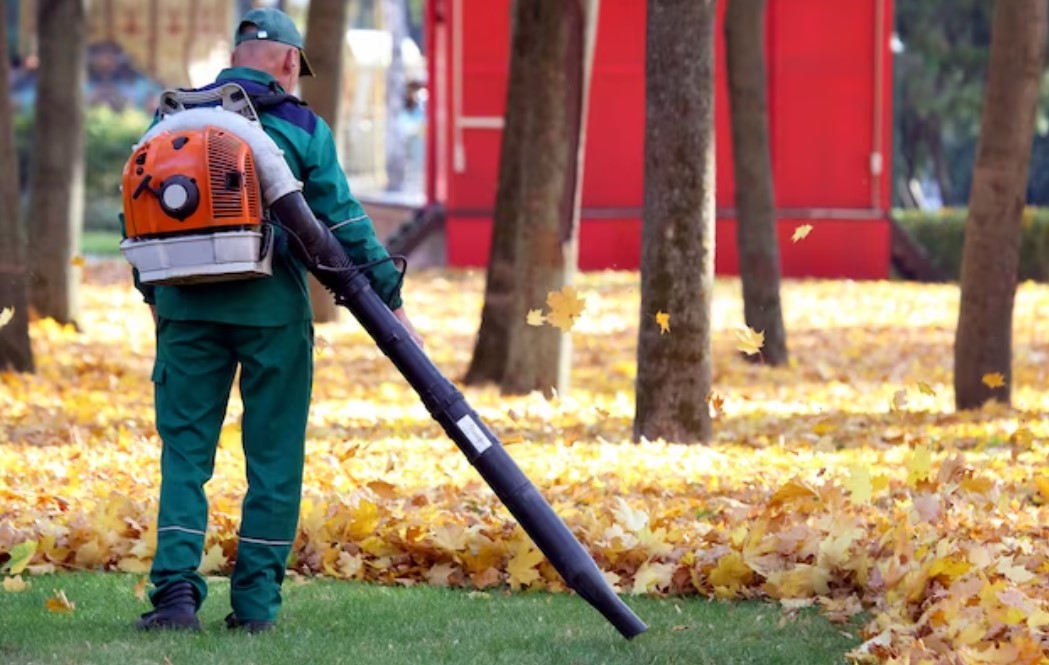Understanding Leaf Blower CFM vs MPH: Choosing the Right Tool for Efficient Yard Cleaning
When it comes to efficiently managing the aftermath of a leaf-strewn yard or garden, the choice of a leaf blower can significantly impact the ease and effectiveness of the task at hand. The interplay between two crucial performance metrics, leaf blower CFM vs MPH, stands as a pivotal consideration for both professionals and homeowners seeking the ideal tool for leaf clearance. In this in-depth investigation of Leaf Blower CFM vs MPH, we delve into a comprehensive exploration of leaf blower performance and conduct a thorough comparison between CFM and MPH, we delve into the nuanced dynamics of CFM vs MPH, unraveling their distinct roles and evaluating their combined influence on the overall performance of leaf blowers.
The definition of Leaf Blower CFM Vs MPH
Leaf blowers have become indispensable tools for maintaining clean and well-kept outdoor spaces, be it residential gardens, commercial landscapes, or public parks. The efficiency and effectiveness of a leaf blower’s performance are influenced by a duo of key CFM (Cubic Feet Per Minute) and MPH (Miles Per Hour) are measurements. Understanding the distinction and significance of these metrics is vital for making an informed choice when selecting a leaf blower that meets your specific needs.

What Is CFM?
CFM stands for Cubic Feet per Minute. It is a measurement that quantifies the volume of air moved by the leaf blower’s fan or impeller in a single minute. It represents the blower’s air volume capacity and is a crucial indicator of its ability to dislodge and move leaves, debris, and other particles from the ground. A higher CFM value signifies a greater volume of air being expelled, resulting in more effective clearing of larger areas. Leaf blowers with higher CFM ratings are particularly adept at tackling heavy accumulations of leaves and stubborn debris.
What Is MPH?
MPH is abbreviated as Miles Per Hour. It measures the speed at which the air exits the nozzle of the leaf blower. This metric determines the force at which the air stream impacts the ground and the debris. A higher MPH value translates to a more forceful airstream capable of dislodging and propelling heavier objects over greater distances. MPH is particularly important for tasks that require moving wet or matted leaves or debris that might be resistant to simple air volume alone.

How to Determine CFM and MPH
In most cases, the engine of the leaf blower determines CFM and MPH. The CFM and MPH will be higher the bigger and more powerful the motor. Start by reviewing the manufacturer’s specifications provided for the leaf blower model you’re interested in. CFM and MPH values are often prominently displayed on the packaging or in the product description. These values represent the blower’s tested and certified performance, giving you a baseline understanding of its capabilities.
Consider the scale and nature of the cleaning tasks you will be addressing. For light, routine maintenance in small yards or driveways, a lower CFM and MPH might suffice. However, if you’re dealing with larger areas, heavy leaf accumulation, or wet debris, opt for a leaf blower with higher CFM and MPH ratings to ensure efficient clearing.
The impeller blades also control the CFM and MPH values. The impeller, which creates the airflow in the leaf blower, is similar to a fan. The length, speed, and angle of rotation of the impeller blades are crucial factors in determining CFM and MPH. It is more difficult to sustain speed when the impeller is at a high angle because more air is created.

Comparing MPH VS CFM In Leaf Blowers
When faced with the task of selecting a leaf blower to conquer nature’s fall carpet of foliage, two critical metrics come into play: cubic feet per minute (CFM) and miles per hour (MPH). These seemingly arcane specifications wield significant influence over a leaf blower’s performance and can determine whether your yard-cleaning endeavor is a breeze or a battle.
MPH, or miles per hour, is the velocity at which air exits the blower’s nozzle. It’s a measure of the raw force propelling debris away. A higher MPH rating implies a more forceful blast, ideal for dislodging stubborn, damp leaves or tightly packed detritus. This metric is analogous to a sharp gust of wind capable of lifting and moving heavier objects. If your yard is plagued by densely packed debris, a high MPH is your ally.
On the other hand, CFM, or cubic feet per minute, quantifies the blower’s air volume output. It’s akin to the breadth of the air stream and determines the blower’s coverage area. A higher CFM rating means a broader sweep, ideal for efficiently corralling loose leaves, grass clippings, and lighter debris. If your yard predominantly features a thick carpet of fallen leaves, a high CFM will prove invaluable.

The dichotomy between MPH and CFM necessitates a balance tailored to your specific yard’s characteristics and your cleaning preferences. If you seek a multi-purpose blower that can tackle both light and heavy tasks, a harmonious marriage of both metrics is essential. Striking this balance ensures you can effectively cleanse your yard of diverse debris types.
Consider a scenario where you’re dealing with a mixture of damp, clumped leaves and scattered dry debris. In this case, a blower with an optimal balance of MPH and CFM is the holy grail. It empowers you to remove stubborn patches while swiftly covering the larger area to clear away lighter elements.
To complete the task, you need a combination of MPH and CFM, but is there a proper ratio? Or, at the very least, a method to assess how much work a blower completes in comparison to others?

Case Studies: CFM vs. MPH in Action
Case Study 1: Clearing Light Debris from a Driveway
Imagine a suburban scene where a leaf-covered driveway poses a challenge. In this case, MPH takes a back seat, and CFM steps into the spotlight. The focus here is on efficiently covering a wide area to clear a multitude of dry leaves, dust, and small debris. A leaf blower with a higher CFM rating is the hero, as it creates a broad, sweeping stream of air capable of effortlessly displacing these lighter elements. The goal is to restore the driveway’s pristine appearance swiftly without expending excessive effort.
Case Study 2: Handling Wet and Heavy Leaves in a Yard
Transition to a rain-soaked yard adorned with heavy, water-laden leaves. Now, MPH has stepped up its game. The challenge lies in dislodging and moving these damp, stubborn leaves that cling to the ground. A higher MPH is crucial here, as it generates a forceful airstream capable of effectively lifting and propelling these waterlogged leaves. However, CFM is not to be ignored either; a balanced combination of both metrics ensures a comprehensive approach. This case underscores the importance of a harmonious synergy between MPH and CFM to combat the specific challenges posed by wet and heavy foliage.

Case Study 3: Cleaning Hard-to-Reach Areas
Navigate to the intricate corners and crevices of a garden, where leaves and debris find refuge in hard-to-reach spots. In this scenario, precision reigns supreme, and versatility is key. An adjustable blower with variable MPH settings comes into play, allowing for controlled airflow to delicately clear debris from sensitive areas. Here, the blower’s ability to modulate MPH and CFM ensures that the clean-up operation is meticulous and thorough. It’s about finesse and adaptability, showcasing how a well-designed blower can be tailored to the demands of intricate spaces.
CFM vs MPH: Which One Matters More in a Leaf Blower?
The eternal debate between CFM vs MPH in the realm of leaf blowers has long intrigued both novice gardeners and seasoned landscaping professionals. The question of whether air volume or airspeed holds greater significance is not easily settled, as both CFM and MPH play distinct yet interdependent roles in determining a leaf blower’s effectiveness.
It would be incorrect to imply that you can overlook either of these indicators when evaluating a leaf blower’s capabilities, regardless of which one is more crucial. While a leaf blower’s CFM rating is slightly more important than its MPH rating, a good MPH rating combined with a good CFM rating makes a leaf blower an excellent pick. Think of it this way: even if your leaf blower has 500 CFM, you won’t be able to push any leaves if the air leaving the blower isn’t moving at a reasonable rate. Similar to the last example, if a leaf blower is spinning at 500 mph, but the nozzle is not producing any air volume, there will be no blowing of leaves. Therefore, for effective leaf blowing, a good balance between CFM and MPH is required.

FAQs
What types of tasks require high CFM and low MPH?
Tasks that involve clearing light, loose debris over a large area benefit from high CFM and low MPH settings. This combination allows for efficient coverage and swift removal of materials like dry leaves, grass clippings, and dust. Cleaning driveways, walkways, and open spaces are prime examples where high CFM helps disperse debris effectively without the need for excessive blowing force.
When should I use high MPH and lower CFM settings?
High MPH and lower CFM settings are ideal for tasks involving stubborn or heavy debris. Wet leaves, matted grass, and compacted dirt require the forceful airflow provided by high MPH to dislodge and move them effectively. This setting is particularly useful for heavy-duty cleaning jobs where raw power is essential, such as dealing with stubborn patches or challenging terrain.
Can I adjust CFM and MPH settings on a leaf blower?
Yes, many modern leaf blowers offer adjustable CFM and MPH settings. These settings allow you to customize the blower’s performance tailored to the current task. You can switch between high CFM for broader coverage and low MPH for more delicate tasks or vice versa. Look for models with variable speed controls or adjustable nozzles to fine-tune the airflow according to your needs.

How do I choose the right leaf blower for my needs?
Choosing the right leaf blower involves considering the size of your outdoor space, the types of debris you typically encounter, and your personal preferences. For larger areas with lighter debris, prioritize a blower with higher CFM. If you frequently deal with heavy, damp leaves or compacted debris, opt for a blower with a higher MPH. Some models even offer interchangeable nozzles to switch between CFM and MPH settings. Additionally, battery-powered or cordless blowers offer convenience for smaller tasks, while gas-powered blowers provide more power for larger projects.
CFM Vs MPH: Both Are Important
When deliberating the merits of CFM vs MPH in the context of leaf blowers, it’s crucial to understand that both metrics carry significant weight in determining the overall performance of these outdoor tools. Rather than pitting them against each other, recognizing the symbiotic relationship between CFM and MPH is the key to making an informed choice.
Which factor leaf blower CFM vs MPH is more crucial? Both of them are! A leaf blower needs a good CFM or MPH to operate effectively. Moving leaves will be difficult with a blower that has a high CFM but a low MPH. A unit, on the other hand, won’t have adequate area coverage if it has an excessive MPH but little CFM.
It’s crucial that you locate a leaf blower that suits your needs. Considering your yard’s size and biodegradable garbage, give one metric priority. Choose CFM over MPH if you have a sizable property that requires regular care. To move moist sticks and leaves, however, you need aim for greater MPH.
The true potential of a leaf blower emerges when these metrics collaborate harmoniously. A balanced approach that factors in both CFM and MPH ensures that your leaf blower can tackle a variety of tasks effectively. How do you feel? Feel free to ask questions and share your thoughts in the comments section below. Please get in touch with me!

Conclusion
Balancing high CFM for broader coverage and low MPH for delicate areas empowers efficient debris removal. Comparing Leaf Blower CFM vs MPH: An Analysis of Performance reveals the intricate relationship between air volume and speed in optimizing yard cleaning tasks. By understanding this synergy, users can select leaf blowers equipped with adjustable settings that harmonize both metrics, resulting in meticulous outdoor maintenance and a pristine, well-manicured landscape.
Related Articles